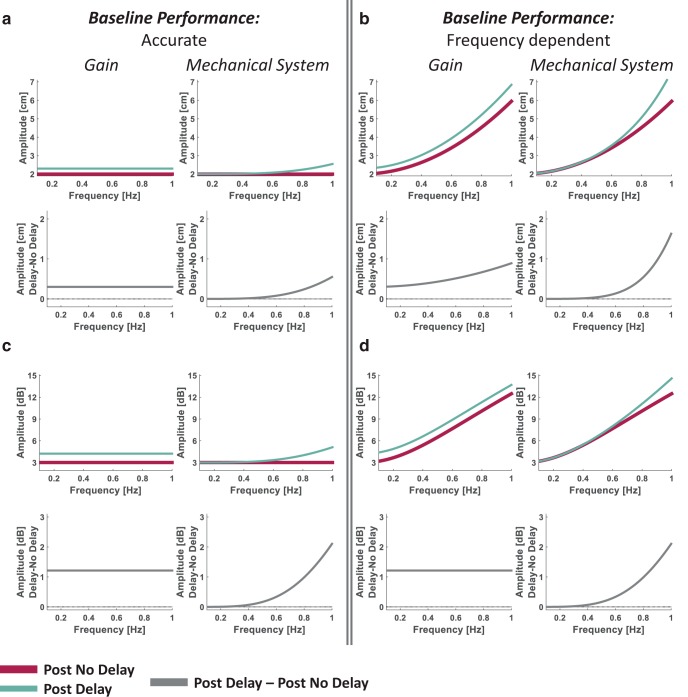Fig 9.
Experiment 4: predicted frequency effects on delay-induced hypermetria. Predicted effects of tracking movement frequency on the increase in movement amplitude following the delayed pong game. In each of the a–d subfigures, the predictions are presented for the State Representation - Gain (left) and State Representation – Mechanical System (right) models. Upper panels display the Post No Delay (magenta) and the Post Delay (cyan) amplitudes in cm (a, b) or in dB (c, d), and lower panels present the difference between them. a, c, When assuming accurate tracking of a target movement that has an amplitude of 2 cm during the Post No Delay session, the Gain representation should predict the same increase in movement amplitude for all frequencies during the Post Delay session, whereas the Mechanical System representation predicts a higher hypermetria with increasing frequency. b, d, A simulation of an increase in the baseline (Post No Delay) movement amplitude with an increase in the movement frequency illustrates that the predictions of both models are equivalent to the predictions for accurate baseline performance when examined in a logarithmic amplitude scale.

